charlotte georgiana fulcher + george ashton
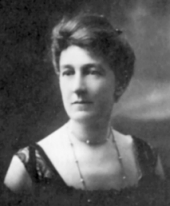
c. 1916
Georgie Fulcher was born in Yaxley, Suffolk on 12 September 1870 to Henry Fulcher and Sarah Edith Mallandaine. According to Kavanagh’s biography of Fred Ashton, Georgie was visiting relatives in Sevenoaks when she met George while he was working at the local post office. George wrote to Georgie when she returned to Yaxley and was later invited to visit by her mother, Sarah. The Fulchers were a successful farming family in Suffolk and although George was not thought to be the ideal husband for their daughter, Georgie’s parents eventually gave their consent for them to marry. It seems that George had already decided to seek his fortune in South America when he asked Georgie’s father for permission to marry her. This may have helped persuade the Fulchers as their only son, Tom, had disappeared in Brazil years before and they hoped that George could use his contacts in South America to help find him.
George obtained a position with the Central and South American Cable Company in Lima, Peru and promised to send for Georgie once he had established himself. Two years after settling in Peru, George was transferred to the company office in Guayaquil, Ecuador and finally sent for Georgie to join him. Georgie was one of eight Saloon class passengers that left Liverpool on board the Gulf of Guinea on 3 August 1895 bound for the port of Callao near Lima, Peru. Three months later, on 2 November, George and Georgie were married at the British Consulate in Guayaquil. George was soon promoted to the position of manager with the cable company, as well as acting as the British Vice Counsel, and his increasing prosperity allowed them to build a large two storey house called Villa Antony on the mud flats on the river Guayas.
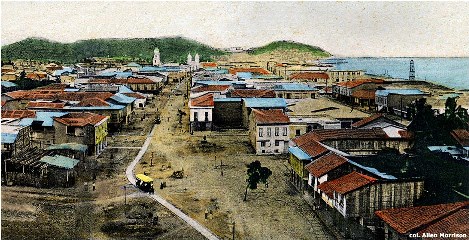
c. 1900
The first of their four sons, Edward Anthony Fulcher was born at Villa Anthony on 4 October 1898. George Alexander Hawkes was born on 23 April 1900 followed by Charles Henry Kenway in 1902 and Frederick William Mallandaine on 17 September 1904. By 1906, George was increasingly concerned about his family’s health and safety in Guayaquil; a revolution caused political and social instability, the city was rocked by several earthquakes and there was an ever present fear of yellow fever and other tropical diseases.
At this time, his wife received word from England that her mother was very ill and she took the children to England to visit her family. Sailing from Guayaquil on 22 March 1906, they arrived in New York eight days later before continuing on to Liverpool. While in England, Georgie had her two youngest sons, Charles and Fred, baptised at St Mary in Yaxley and she also met George’s 16 year old son from his first marriage, John Stevens, for the first time.
By the time they returned to Ecuador, George had decided that the city was no place to raise children and he sold Villa Anthony and his remaining property in Somerset to fund a move to Lima. In 1907, they rented the first floor of a house on Calle Washington near the historic city centre and remained there for the next ten years. George still had business interests in Guayaquil and he spent much of his time there while Georgie travelled back and forth between Guayaquil and Lima. Their daughter, Edith Margaret Gertrudis, was born in Guayaquil on 2 May 1911.
In 1911, John Stevens Ashton was still living in Somerset and working as a Clerk but he left England two years later and sailed to Lima to join his father. George had always sent money to the Stevens sisters to support John and provide for his education but there is no record of any contact between the two other than letters. George believed that South America offered more opportunity for his son to advance his career and encouraged him to emigrate and John, or Stevens as his father called him, initially moved in with the Ashtons on Calle Washington and took a position with the cable company as an accountant.
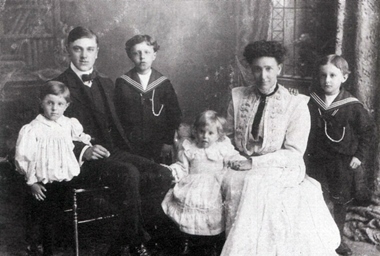
Charlie, John Stevens, Tony, Fred, Georgie & Alex
According to their son Frederick, their family life was not a happy one. Georgie and George had little to do with each other and even less to do with their children. He described his mother as ‘spirited, witty and a good friend to anyone in need of comfort’ but she was also known for her strong will and determination to improve their social status. She kept busy with an active social life and Frederick recalled memories of the many parties held at Calle Washington:
Elegant ladies rather plump in slit skirts, enormous hats and tango shoes would all pour into our house, and the Chinese Minister would arrive with a Japanese wife and gradually empty the rooms because no one could stand his poppy scent.
But as much as Georgie loved the society parties in Lima, George hated them. Fred described his father as a ‘dark, introverted character with a melancholic streak’ who was very strict with his children. Perhaps due to the poverty he experienced as a child, George believed that the only endeavour worth doing was one that would earn money and he was far more interested in seeking out new business opportunities than attending parties and dances.
The Ashtons were typical Edwardian parents — they were emotionally distant from their children and did not believe in outward signs of affection. They hired nurses, governesses and maids to provide the primary care for their children and believed in the benefits of an English boarding school education. The children attended the local Dominican school in Lima, Le Recoleta, until the age of 12 or 14 when they were taken to England to attend boarding school for their secondary education.
In 1914, George, Georgie and Edith left Lima and returned to Guayaquil. Their three eldest sons were attending school in England but Fred remained in Lima to continue his education at the Dominican school. He boarded with another English ex-pat family, the Watsons, in the Miraflores neighbourhood and although his mother often returned to Lima for visits, he rarely saw her or his father. Fred’s education in England was delayed due to the war in Europe but on 14 August 1919, he left Lima for Dover College in Kent sailing in a First Class cabin on board the Mexico along with his friend and classmate Guy Watson. One year later, George and Georgie travelled to England with their daughter Edith to escort her to the Micklefield Girls School in Reigate, Surrey.
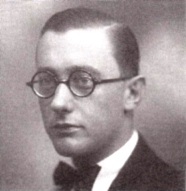
With their youngest children settled in England, George and Georgie returned to life in Guayaquil where George became increasingly prosperous through both the coffee trade and petroleum prospecting on the Santa Elena Peninsula in Ecuador. He also held the position of manager at Milne, Williamson & Co. and later became the first manager of the Anglo-Ecuadorian Commercial Society Ltd as well as helping his sons, Tony and Charlie, establish their own coffee and cocoa export company, Casa Carlos Ashton. Despite his professional success, his struggle with melancholy and depression continued and his condition deteriorated to such an extent that he committed suicide in his office on the morning of 14 January 1924. His son Charlie was working in the office upstairs and after hearing a gun shot, went to investigate and found his father fatally wounded in the vaults downstairs.
Despite George’s business success, he left little ready cash to support his wife and youngest children. His investments in various local industries could not be redeemed and were a long way from paying dividends and within a month of his death, Georgie decided to return to England but with no cash at her disposal she was forced to apply to the British authorities for repatriation expenses. Her haste to leave Guayaquil may also have been fueled by the desire to escape the shame of her husband’s suicide in a devoutly Catholic country. She sailed home on board the SS Cedric and arrived in Liverpool at the end of February before making her way to London to meet her twenty year old son, Fred.
At the time of his father’s death, Fred was living in Argyle Mansions in Croydon with Maud Lawson, an old school friend of Georgie’s from Bury St Edmonds. Maud’s brother was a partner in a firm of import & export merchants in the City and this family connection provided Fred with a job as an Office Clerk with Lawson’s firm. Fred and Georgie initially took rooms in the Alwin Court Hotel in Gloucester Road, Kensington but several months later, Georgie rented a three bedroom house in West Bolton Gardens so Edith, who was still attending school at Mickelfield, could stay with them during the school holidays. Thirteen year old Edith was very close to her father and was devastated by his death.
Shortly after settling in Earls Court, Fred replied to an advert in the Dancing Times for ballet lessons with Russian choreographer and dancer Leonide Massine. According to Fred, his life changed in 1917 when he saw Anna Pavlova dance in Lima, Peru on her South American tour and he later claimed that ‘she injected me with her poison and from the end of that evening I wanted to dance.’ Unfortunately, his father was adamant in his refusal to allow his son to take ballet lessons and it wasn’t until after his death that Fred found the courage to pursue his dream. He kept the news from his mother but she eventually found out and was not pleased with the idea of her son taking ballet dances but despite her objections, Fred continued with the lessons after receiving support from his brother Charlie who was visiting England at the time.
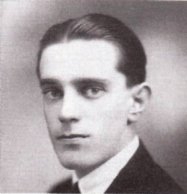
Soon after finishing college, Charlie married Maria Saenz in Guayaquil. She was the daughter of a wealthy, aristocratic family and for their wedding present, they gave the young couple one of the grandest houses in Quito. Charlie and Maria had one son, George Allan, born in Guayaquil on 19 July 1924. Charlie was still operating his company, Casa Carlos Ashton, and travelled to England with his wife and son to further his business interests arriving first in Liverpool on 7 February 1925 and before travelling to London to visit his family. After Charlie agreed to support his family in England, Fred was able to realize his ambition to be a dancer and quit his office job in the City to study dance full time.
However, the family could not escape their ever present financial worries and one day, Georgie announced to her son and daughter that Casa Carlos Ashton was bankrupt and as a result, Charlie was no longer able to support them. The company was involved in the large scale import and export of products, primarily cocoa beans, with thousands of tonnes exported between 1924 and 1935 but the economic downturn resulting from the Great Depression forced the company to cease operations in 1935. In his autobiography, Fred claimed that Charlie ‘squandered his money on foreign travel, gambling, Ecuadorian art, cars and mink coats collected by Maria.’
Georgie’s other sons, Tony and Alex, did not have the financial resources to support the family at that time and as a result, they were forced to move to a smaller house in Earls Court. Georgie was embarrassed by their reduced circumstances and despite her love of entertaining, she refused to invite friends to the house for fear of what they would think. She became increasingly isolated from her friends and more and more dependent on her children for entertainment and emotional support. The family survived on funds received from the sale of the emeralds and jewelry George had bought for Georgie in Ecuador and on the financial support of friends particularly the Lawsons. Georgie also earned a small amount of money after she joined the Overseas League and wrote several articles, under the pseudonym Anthony Sant, on her experiences in Ecuador for their monthly journal.
Tony was working for a British commercial firm in La Paz, Bolivia when he met and married Esther Schmidt on 19 June 1927. They had three children — Rosemary, Horacio and Esther — and remained in Bolivia where Tony worked in the burgeoning mining industry. He was appointed as His Majesty’s Consul General in La Paz in 1945 and after working for British interests for twenty years, he was awarded an OBE — an Ordinary Commander of the Civil Division of the Most Excellent Order — on 1 January 1962. Tony died in La Paz on 10 January 1975.
Alex remained in Guayaquil and worked with his brother Charlie at Casa Carlos Ashton. He married Ines Arosemena Coronel, the daughter of Pablo Arosemena Merino Coronel and Susanna Coronel Elizalde, and had two children, Priscilla and Gerardo. After the family business collapsed, Alex became involved with the British Foreign Service and served as the British Vice Consul in Guayaquil until his death in 1967.
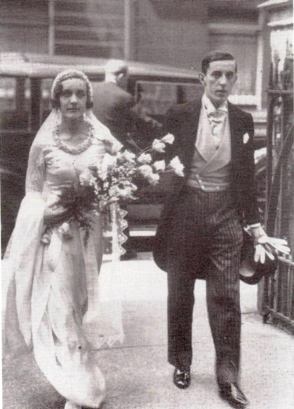
When she left school, Edith hoped to pursue a career as a concert pianist but she was forced to take a job as a secretary in the typing pool at the Foreign Office to help support her mother and brother. Edith married her first husband, Trevor Richards, on 18 June 1932 and according to her brother Fred, she rushed into marriage to escape her mother’s ‘oppressive eye.’ Together, they opened a club called Steve’s near Sloane Square and Edith often played the piano there but by 1939, their marriage had collapsed and Edith petitioned for a divorce. Two years later, she married her second husband Francis Douglas Russell-Roberts, a lieutenant commander in the Royal Navy, and shortly after the ceremony at the Register Office in Weymouth, Douglas returned to service for the duration of the war.
Edith and Douglas had one son born in Windsor in 1944 but their marriage later broke down and Edith left Douglas and settled in Norfolk where she met her third husband, Harold Grenfell. He was a retired naval commander who made his fortune in the Rhodesian copper mines before settling in Burnham Thorpe, Norfolk. When Douglas finally agreed to a divorce, Edith married Harold and they moved to his country estate, Clobemon Hall, near Enniscorthy in County Wexford, Ireland. Douglas Russell-Roberts died from injuries suffered in an automobile accident in France shortly after their divorce.
Fred continued his ballet lessons with Leonide Massine and later with Marie Rambert who first recognized his skills in choreography. He danced with the Rambert company and after a successful audition with Bronislava Nijinska, Fred toured France with the Rubinstein company for one year. After returning to London, he joined the Vic Wells — which later became the Sadlers Wells and finally the Royal Ballet — and appeared in productions such as The Sleeping Beauty and Façade as well as choreographing a number of ballets including Les Rendezvous, Les Patineurs and The Wedding Banquet.
After years of struggle, Fred was finally enjoying both personal and financial success. He was able to rent a larger house in Wharton Street near Sadlers Wells but shortly after moving there, his mother Georgie died on 29 April 1939 after a short illness. Charlotte Georgiana Fulcher was buried alongside her family at the church of St Mary in Yaxley.
Fred’s career as a dancer was interrupted when he was called up for war service and commissioned as an officer in the RAF. In the spring of 1948, Fred bought the Old School House situated next to St Mary’s in Yaxley and renamed it Church Cottage. Fred and his sister Edith had visited Yaxley almost ten years previously and he was obviously taken with the quiet country town.
Although he loved to dance, Fred’s greatest ability lay in his work as a choreographer. His most famous works include Cinderella, Sylvia and Daphnis and Chloe and he also created a number of major ballets especially for Dame Margot Fonteyn, including Symphonic Variations, Ondine, and La Fille Mal Gardée. Fred was the principal choreographer of the Royal Ballet from 1933 to 1970 and took on the additional responsibilities of Director from 1963. He was knighted in 1962 for his contributions to British ballet.
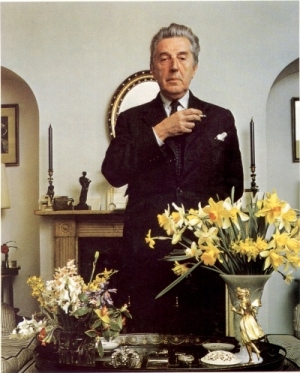
Ashton, like so many other famous gay men of his time, was ‘necessarily discreet but not closeted’. Homosexuality was still a crime in Britain but the section of society that supported the arts was much more tolerant and even celebrated flamboyant gay artists. Ashton was ‘a member of the circle of gay men who surrounded Queen Elizabeth, the late Queen Mother, whom he taught to tango. When she heard that Ashton, a formidable mimic, did imitations of her, she retaliated by imitating his own queenly manners.’
Fred finally left the Royal Ballet in 1970 and retired to Chandos Lodge in Eye, two miles from Yaxley. He died at Chandos on 18 August 1988 and was buried in the church yard at St Mary’s Yaxley. Fred left the Lodge and its contents to his sister and his house on Marlborough Street in London to his nephew.
Edith had suffered a mild stroke in 1980 while working in her garden followed by a second, more serious stroke in the hospital. She was in a coma for several months and was left with partial paralysis and impaired speech. Her husband, Harold Grenfell, died in Ireland in 1986 and Edith moved to a nursing home in London to be closer to her son. Edith, the last of George and Georgie’s children, died in Wandsworth, South London in 1990.